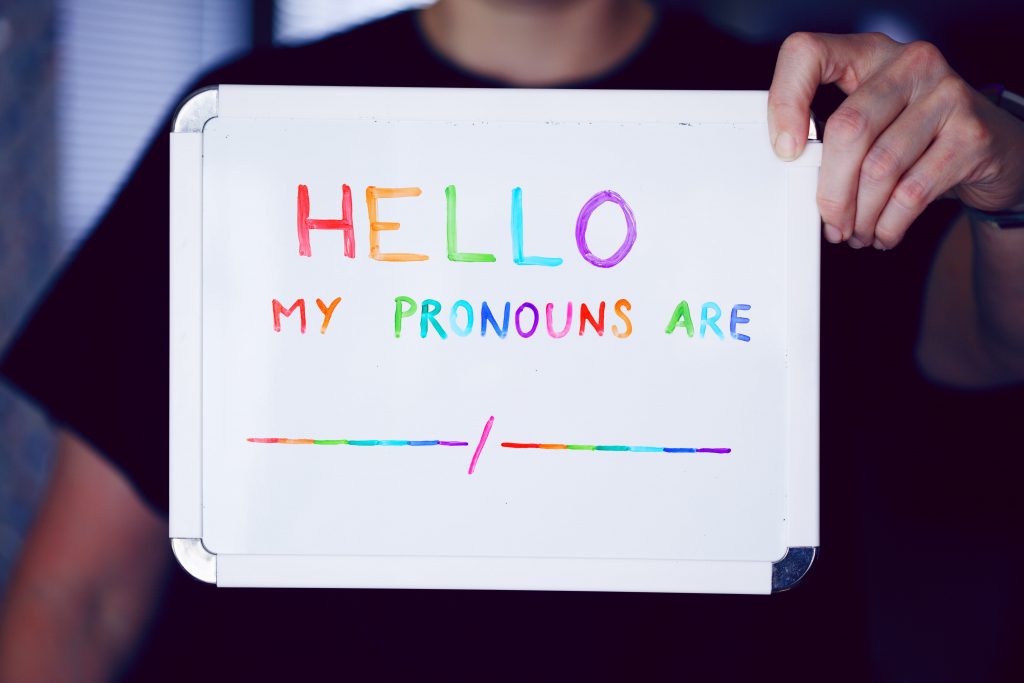Millions and millions of us use social media. 77.9% of the UK population to be exact.
And hands up, who finds themselves influenced by social media?
Whether it be purchasing a product from a sponsored advert, giving an opinion on politics or current events or following an account because a mutual connection has engaged with them?
Exactly.

Now, do you ever think of yourself as influencing others on social media?
Perhaps not.
But as soon as you have pressed ‘attend’ on that Facebook event, your friend is doing the same thing. Your family member is looking at the menu for that new restaurant you have just checked in at. And your old university roommate has just applied for the vacancy at your company you have just shared.
Therefore as content creators, as commenters and as reviewers, we must ensure we are building towards an inclusive and accessible environment.
So what are platforms doing to help?
Let’s talk pronouns…
You have probably seen a mixture of he, him, she, her, they and them quite a lot on social media in the last few months.
The use of pronouns on social media is a way of people informing others of their identity.
There is no harm in asking someone what pronouns they would like to be addressed by but many non-binary and transgender people choose to display these to avoid being identified incorrectly. Cisgender people also disclose their pronouns to be supportive and show unity.
Now instead of adding these manually, some platforms have rolled out this as a profile feature, allowing people to easily share their pronouns; Instagram being the latest.
What a great step to start normalising conversation about identification and to help others feel a little safer in that online community!

A picture is worth a thousand words…
Okay, well maybe not a thousand words are needed! But using descriptive alternative text on your images and GIFs is crucial. 15% of the world’s population (that’s a massive one billion people!) experience some form of disability. So ensuring content is accessible decreases the risk of exclusion.
Twitter, Facebook, Instagram and LinkedIn give users the option to add alt-text/captions/descriptions for images and videos. By adding this in, it allows people with visual impairments to know what is in the image via screen readers.
When writing the alt-text, ensure you mention particular aspects of the visual (colour, text, people’s names) if they are important to the visual to increase the audience’s understanding.
Read all about it…
To assist with hearing impairments, many platforms have enabled automatic captions on videos.
Take Instagram for example – they have rolled out a new function on their Stories which generates automatic captions. Facebook have a similar feature for videos too – however it allows you to edit any mistakes they may have made. Amazing, right?!
Twitter and LinkedIn allow users to upload a subtitles file but haven’t yet introduced the automatically generated feature.
What is great about these features is that they are not just appealing to those that they may have been predominately created for. Video captions and subtitles benefit people who share an office space with others; those who are commuting on public transport; those who are trying to get their baby to sleep.
Let’s unite…
There are other aspects on social media which allow unity. Language translations, awareness day stickers on Instagram, dedicated hashtags, diversity filters, to name a few.
But the responsibility is on us, to ensure we help contribute towards the inclusive environment.
Culture Change Training
Find out more about our Diversity, Inclusion and Culture Change Training for all levels and sectors.